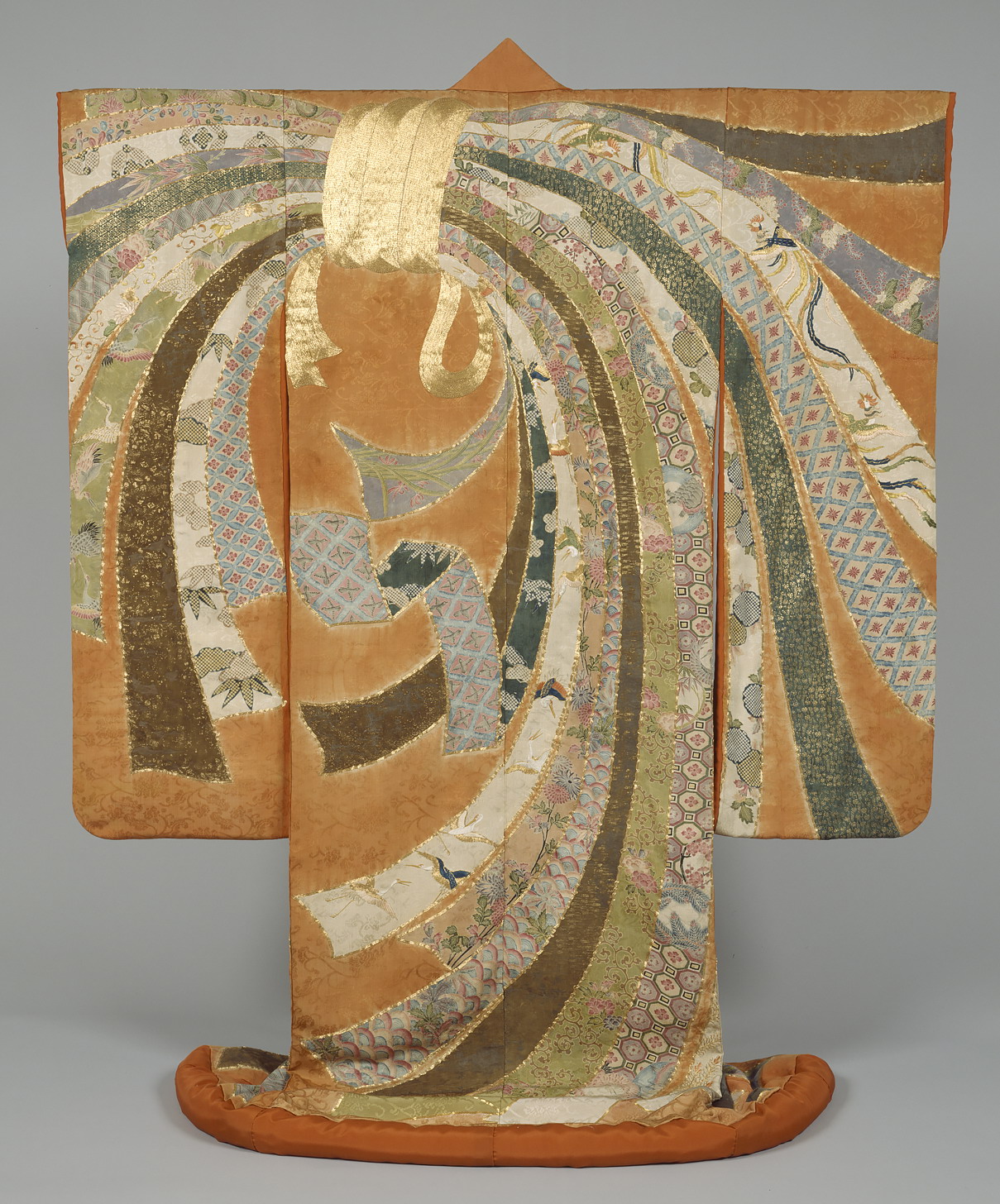- TOP
- The KNM Collection
- Masterpieces of the KNM
- Textiles and Costume
- Furisode Kimono with Noshi Bundle Design
*Click or tap image to enlarge.
Textiles and Costume
Furisode Kimono with Noshi Bundle Design
- Japan, Edo Period, 18th century
- Yuzen dyeing, shibori (tie-dyeing), embroidery, and gold-foil
- Length 162.0 cm, Sleeve length 59.0 cm
- Yuzenshi-kai, Kyoto
This is an excellent example of an Edo Period yuzen-dyed kimono. Colorful noshi (auspicious strips of dried fish or seaweed) are bundled at the left shoulder and flow over the body in a dynamic composition.
This kimono was produced with painstaking techniques. First, figured crepe was shibori (tie)-dyed red, leaving the noshi sections white. Then, gold threads were stitched onto the surface around the borders of the noshi strips. The noshi strips were then decorated with auspicious motifs, such as pine, bamboo, plum, paulownia, phoenixes, cranes, peonies, waves and shokko medallions. Yuzen dyeing was the predominant technique used in these decorations, with supplementary surface decorations in embroidery, pressed kinpaku (gold leaf), and suribatta stencil dyeing.
The bold noshi pattern, with its multi-layers of auspicious motifs, and the vivid, showy colors of this furisode kimono well represent the aesthetic sensibilities of the mid-Edo Period.







